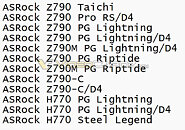
Sapphire Radeon RX 7600 PULSE GPUs Photographed Ahead of Late May Launch
VideoCardz has today received a tip-off from an anonymous source about a batch of Sapphire Radeon RX 7600 PULSE graphics cards - boxed products have been photographed sitting in a hardware store located "somewhere" in Asia. It is not immediately clear whether the Sapphire cards were pictured in a store-front setting, or an employee has taken a snap of stock stored in a backroom and shared it with their internet buddies. Previous leaks relating to AMD Radeon RX 7600 and 7600 XT cards have pointed to a May 25 launch day - so today's tip indicates that products have been readied well in advance of the anticipated release window.
The insider source claims that the Sapphire Radeon RX 7600 PULSE graphics card will be sold for about $249 in that particular territory. Specifications on the outer packaging can be read (if you zoom in enough) - the Pulse custom variant is labeled as being overclocked out-of-the-box, so it is highly likely that it will be fitted with a custom cooling solution. The packaging's blurb lists the presence of 32 RDNA3 CUs - indicating a full configuration of AMD's Navi 33 GPU die, consisting of 2048 stream processors. The Pulse card gets an Infinity Cache allocation of 32 MB, and a specification of (now typical) 8 GB GDDR6 video memory is confirmed.
The insider source claims that the Sapphire Radeon RX 7600 PULSE graphics card will be sold for about $249 in that particular territory. Specifications on the outer packaging can be read (if you zoom in enough) - the Pulse custom variant is labeled as being overclocked out-of-the-box, so it is highly likely that it will be fitted with a custom cooling solution. The packaging's blurb lists the presence of 32 RDNA3 CUs - indicating a full configuration of AMD's Navi 33 GPU die, consisting of 2048 stream processors. The Pulse card gets an Infinity Cache allocation of 32 MB, and a specification of (now typical) 8 GB GDDR6 video memory is confirmed.








































































